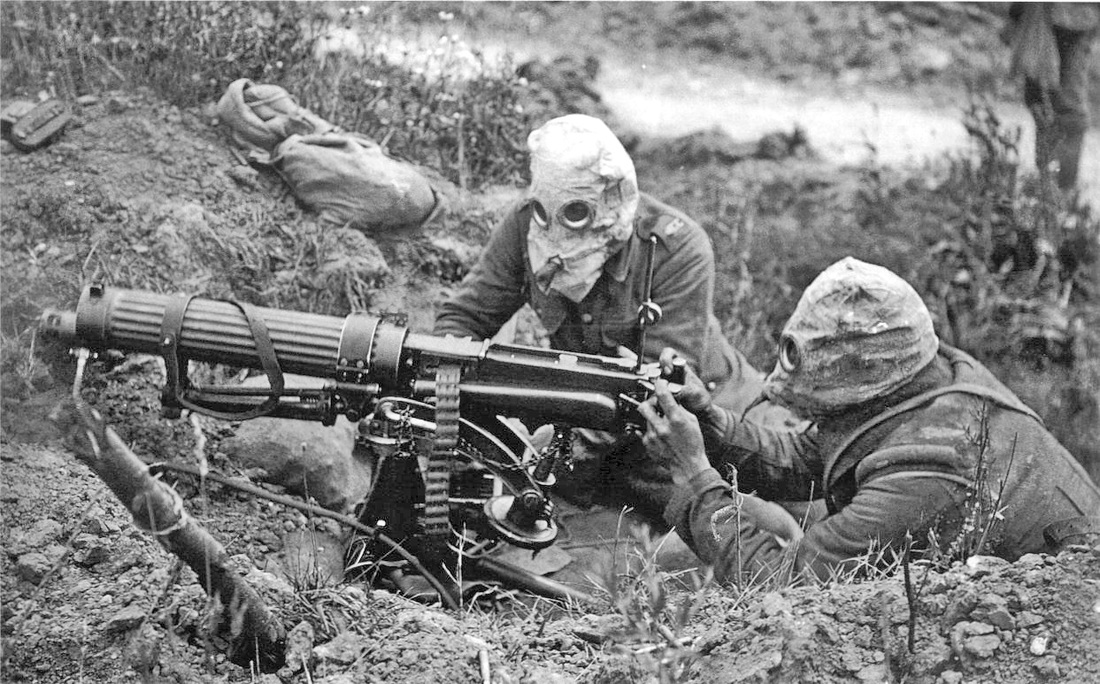⚔️ Infantry Weapons of World War I ⚔️ ️
🗡 Infantry weapons were very crucial for soldiers back in the days, as wars were fought on battle fields, man-to-man combats. The first weapon used in WW1 was an ☢️ clorine gas cylinder fired by germans in April 1915.

Infantry (noun.)
- Soldiers or militry units that fight on foot
- A branch of an army composed of such soldiers
Infantry Weapons (noun.)
- Weapons used by infantry soldiers and regiments such as rifles, machine guns, granades and mortars etc.
Weapons
Rifles
Rifles are long-barrelled firearm designed for accurate shooting. They are typically designed to be held by both hands and braced firmly aganinst the shooter's shoulder for stabilty. The modern rifle is now often used for any long-shaped handheld ranged weapon designed for well-aimed discharge activated by a trigger. Historically they only fired a single projectile per trigger. Modern rifles have advanced with technology and can fire multiple times.
📖 Read more about on source page


Mortars
Mortars are artillery weapons, becuase of their light weight and portability they can be carried by one soldier alone. They are used for short distance targets as, they don't have a long range. Mortars are easy to use. The tube of the mortar is set at the ground between 45 - 90 degrees angle and fired by a pull string. There are various types of Mortars. They diffrentiate in size, ammunition etc. depending on the purpose of use.
📖 Read more about on source page

💣 Hand Granades
In World War I, hand grenades were also known as “hand bombs.” Their general use in a combat was to kill the enemy underground or behind cover. They could also force the enemy into the
open, providing targets for rifle and machine gun fire.
Offensive grenades used concussion, to wound, while defensive grenades exploded, scattering shell
fragments. Gas, smoke and illuminating grenades were also used in World War I. These grenades were made of brass, iron
and steel, some with handles of wood and even cardboard. They went by many names and took on many shapes.
📖 Read more about on source page

Machine Guns
The machine gun was one of the most iconic weapons of World War I. Most machine guns of World War 1 were based on Hiram Maxim’s 1884 design. They had a sustained fire of 450–600 rounds
per minute, allowing defenders to cut down attacking waves of enemy troops like a scythe cutting wheat. Contrary to popular belief, machine guns were not
the most lethal weapon of the Great War. That dubious distinction goes to the artillery. The machine gun
revolutionized combat efforts and quickly drove out nations with their horse-drawn carriages into submission.
These rapid-fire guns were fully automatic. Which is why it single handedly changed the outcome of WWI and subsequently
change the art of war as we know it.
📖 Read more about on source page

Equipment of the avarage german infantry soldier
At the beginning of the war, the common German infantryman still retained equipment and traditions from decades before.
As the war progressed, many innovative changes occurred in the German infantryman’s equipment and uniform. Steel helmets
replaced leather. Body armor, trench clubs, hand grenades, knives for close combat, and even submachine guns were used
on the battlefield. Gas masks protected against the terror weapon of poison gas. The following picture is a typical example of the equipment of a german soldier.
📖 Read more about on source page
